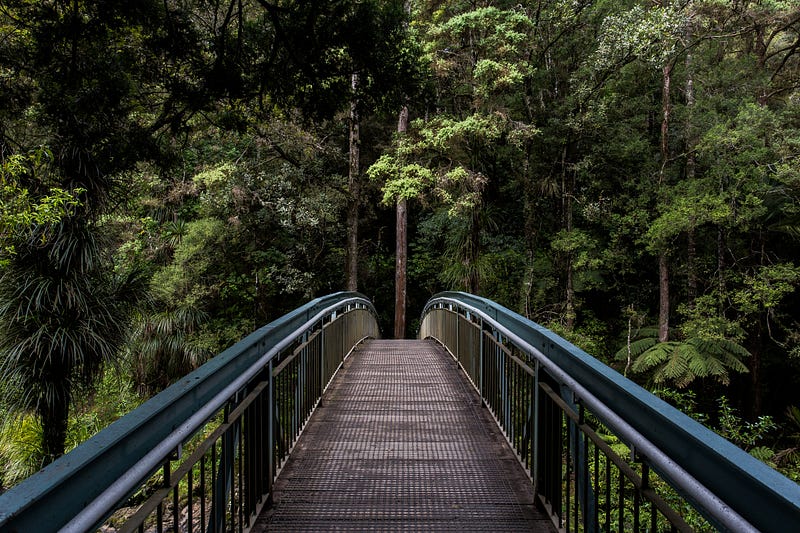# The Unexpected Ways Biodiversity Shapes Our Daily Lives
Written on
Chapter 1: The Essence of Biodiversity
As a typical garden enthusiast from the UK, I find solace in my small garden, often with a steaming cup of tea in hand. Whether the skies are sunny or gray, I enjoy the familiar sounds and scents that change predictably with the seasons. In spring, the lively songs of blackbirds fill the air, followed by the buzzing of bumblebees in summer, and the earthy aroma of fallen leaves in autumn.
During my stay in Pennsylvania, USA, one warm spring evening, I was greeted by an invigorating scent of pine, a stark contrast to the moist air of home. The birds, too, had a different melody as I prepared my morning coffee. While both the UK and Pennsylvania experience four distinct seasons and high humidity, the natural sounds, sights, and fragrances vary greatly. This difference in biodiversity amazed me and deepened my appreciation for the vast array of species that inhabit our planet.
What is biodiversity and why does it matter?
Biodiversity, a blend of “biological” and “diversity,” refers to the variety of species within a specific area, whether that’s a single habitat or the entire globe. It is crucial to recognize that every living organism is part of an extensive web, with each species interconnected through delicate threads. If one part of this web is damaged, such as through habitat destruction, it can disrupt the entire system, affecting even those organisms not directly linked to the disturbance.
For instance, the conservation of spider monkey populations is vital for combating climate change and ensuring human survival. These monkeys play a significant role in dispersing seeds for specific hardwood trees, which are excellent at absorbing carbon dioxide from our atmosphere.

Chapter 2: Biodiversity's Impact on Our Food
The diversity of life directly influences our food supply. Approximately 75% of our food crops depend on various organisms for pollination. While bees are well-known for this role, other insects, like wasps, and various animals also contribute significantly to effective crop pollination.
Biodiversity is also affected by agricultural practices. In the UK, for instance, farmers are encouraged to maintain hedgerows at the edges of their fields to foster habitats for various plant, animal, and insect species. In contrast, monoculture farming, which involves growing a single crop over a vast area, leads to reduced biodiversity. Additionally, the increasing human population continues to drive the clearing of species-rich lands for agricultural purposes.
A diverse ecosystem also helps regulate pest populations. With a variety of predator-prey relationships, it can prevent any one species from becoming too numerous.
Can people have a positive impact on biodiversity? | Kina Murphy | TEDxABQ
This video explores how individual actions can contribute to the conservation of biodiversity, highlighting the positive effects humans can have on the environment.
Chapter 3: Biodiversity and Climate Change
The ongoing loss of species during the current sixth mass extinction event is considered just as dire as climate change, with both issues closely linked.
Certain plant species, particularly trees, are exceptional at storing carbon. Through photosynthesis, they absorb carbon dioxide from the atmosphere and convert it into glucose, which becomes part of the plant’s structure. This process is crucial for removing carbon dioxide from the air, and deforestation significantly contributes to greenhouse gas emissions.
Biodiverse ecosystems like mangroves, forests, and coral reefs also serve as natural barriers against extreme weather events, providing protection from storms and floods.
Human Impacts on Biodiversity | Ecology and Environment | Biology | FuseSchool
This educational video discusses the various ways human activities affect biodiversity, emphasizing the consequences of these impacts on the environment.
Chapter 4: Biodiversity’s Role in Medicine
Many modern medicines have their origins in nature. For example, aspirin is derived from salicylic acid found in willow bark, digoxin comes from foxgloves, and paclitaxel, a cancer treatment, is sourced from the Pacific yew tree. Although many pharmaceuticals are now artificially synthesized, their foundational compounds often come from natural sources.
Furthermore, a decline in biodiversity can lead to an increase in diseases. Deforestation, for instance, is pushing mosquito populations into new areas, which can facilitate the spread of illnesses.
Chapter 5: Cultural Significance of Biodiversity
The biodiversity of a region is often intertwined with its cultural identity. For example, the kangaroo represents Australia, while the beaver symbolizes Canada. In the UK, each nation has its own national flower: the shamrock, thistle, rose, and daffodil. Local species often inspire artistic expressions, especially among indigenous communities.
Imagine losing all of this richness! The diverse sounds, sights, and aromas of a thriving ecosystem are essential for our well-being, the health of our planet, and the preservation of our cultural heritage.
Next time I visit a new location, I’ll appreciate the local organisms' unique sights and smells even more, reminding myself that we are all interconnected.